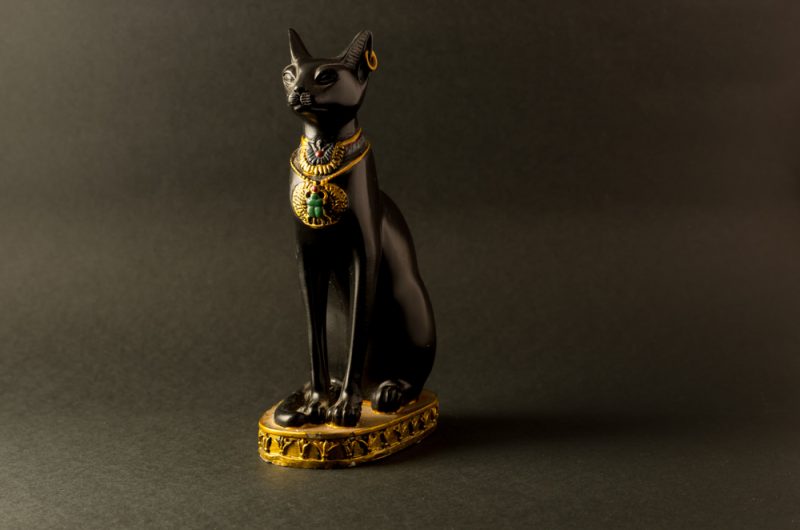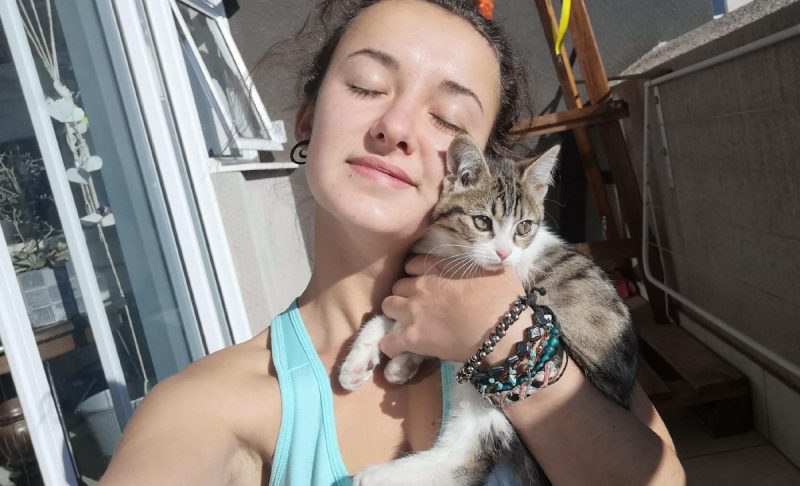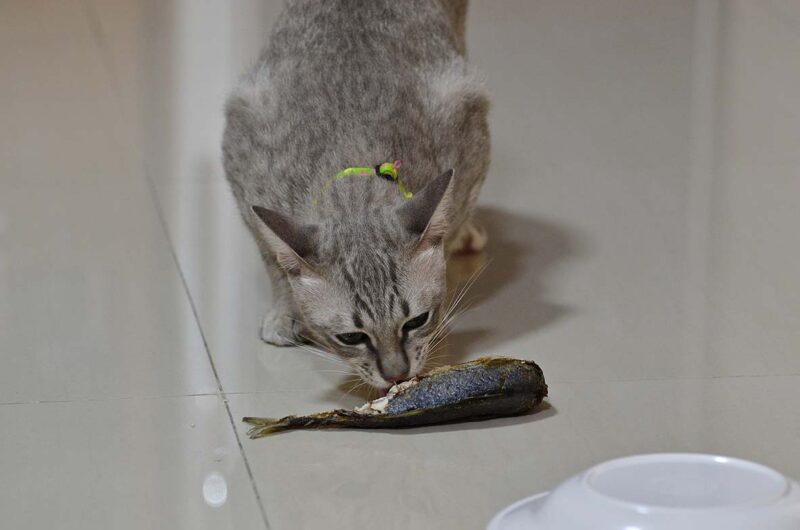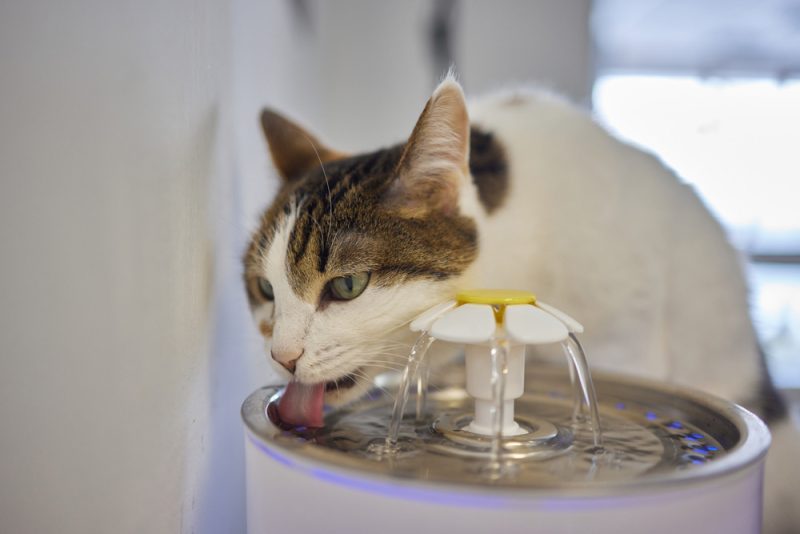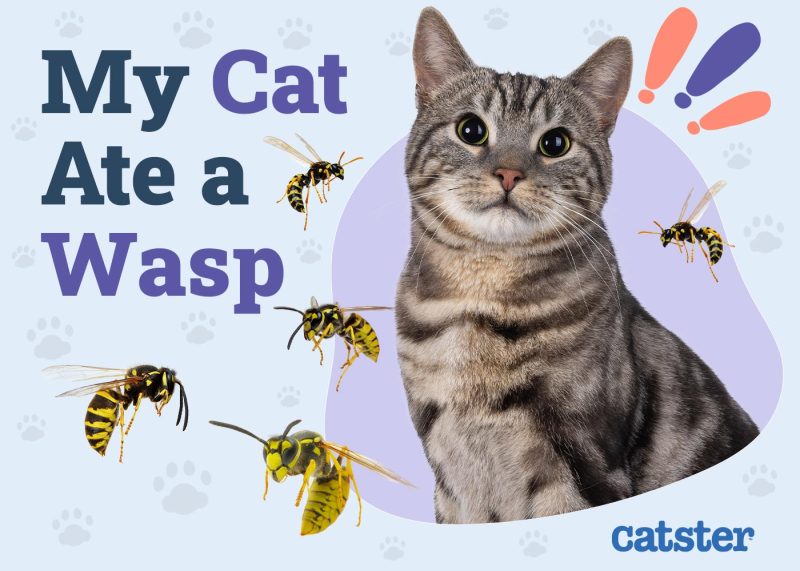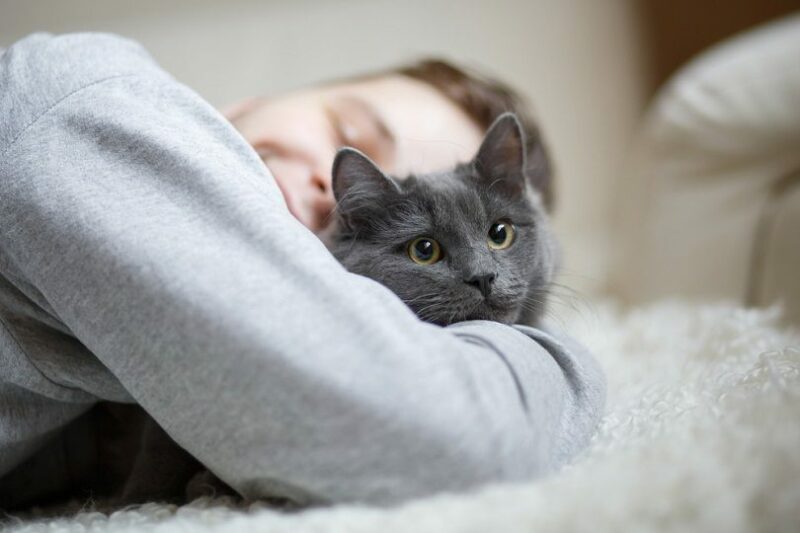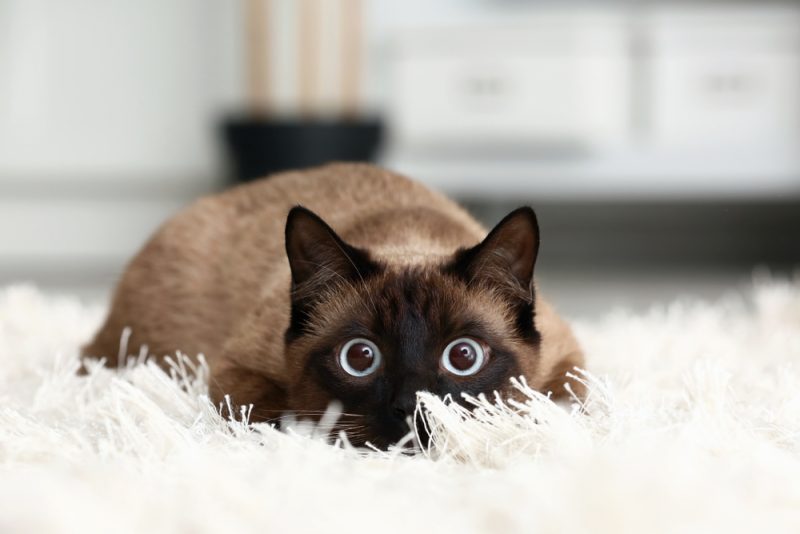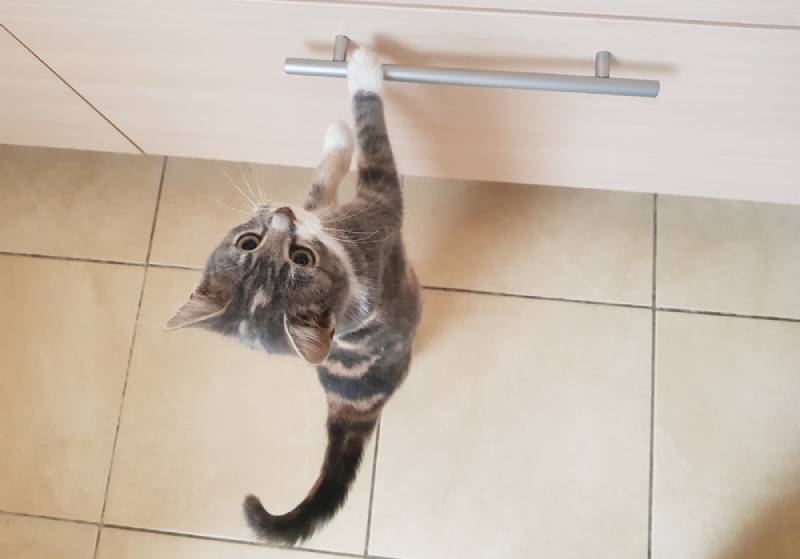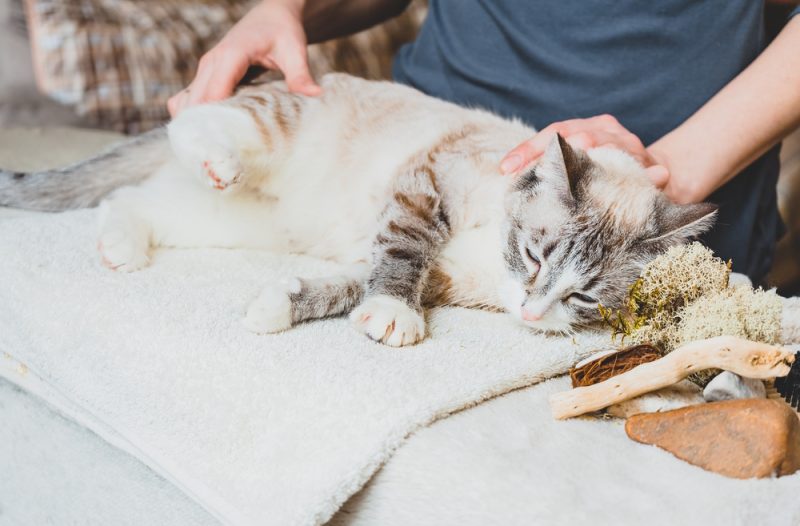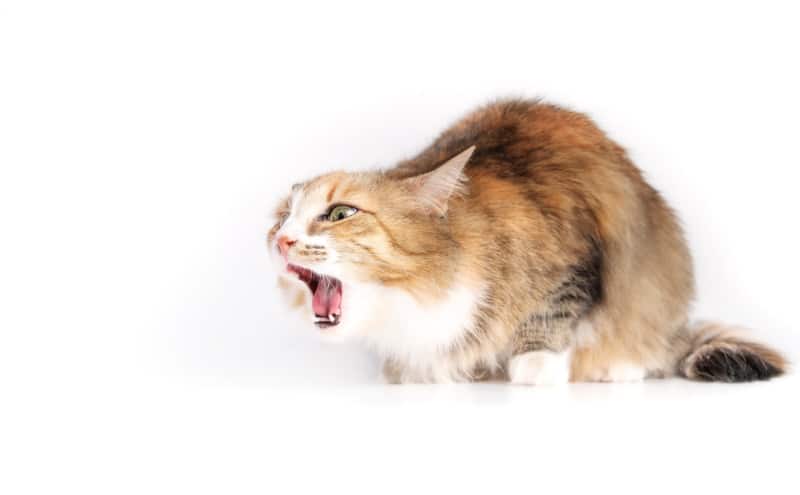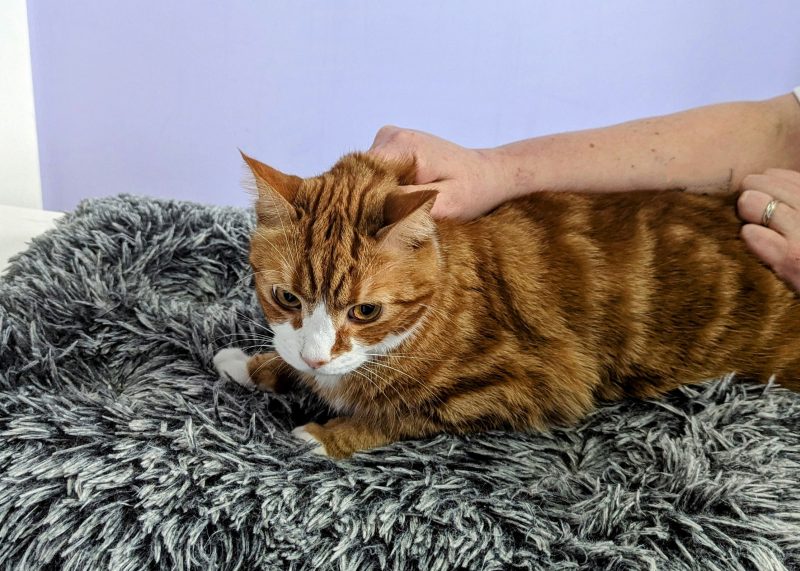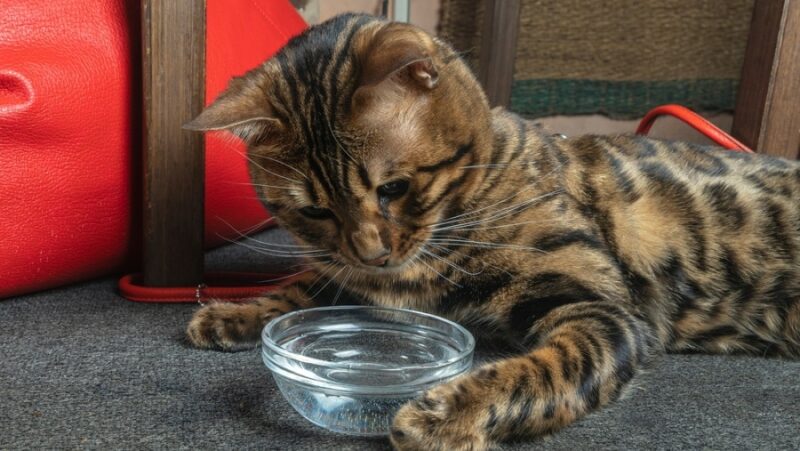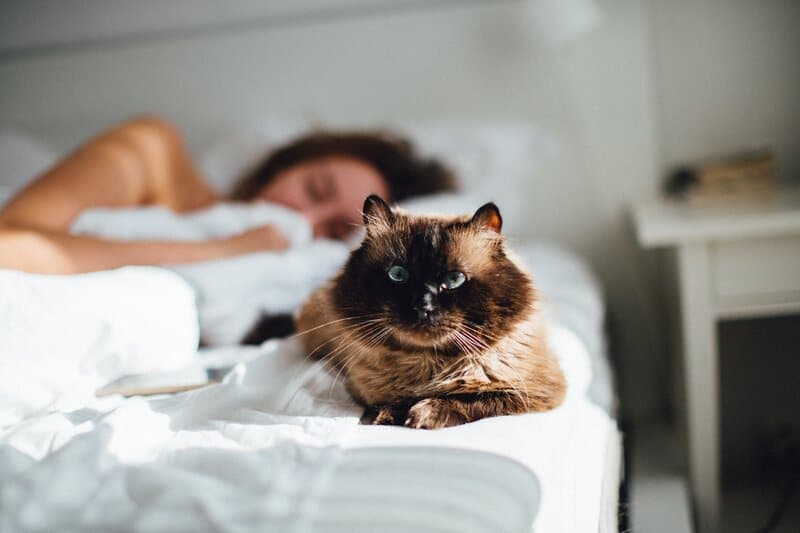Felines are first pictured in ancient Egyptian art that dates as far back as 1950 B.C.E.,1 and they were important to ancient Egyptians more than 4,000 years ago. That’s a long time ago, but it turns out that cats have been living with us for thousands of years before this ancient civilization even existed.
According to new evidence, however, the Egyptians likely made cats popular and helped them expand their domain further into the world. They may be responsible for a second domestication of the species.
Despite Egypt’s massive role in the domestication and popularization of cats as pets, very few prominent breeds today have their roots in this desert land. Let’s take a look at six Egyptian cat breeds that can be traced back to these roots.

The 6 Egyptian Cat Breeds
1. Egyptian Mau
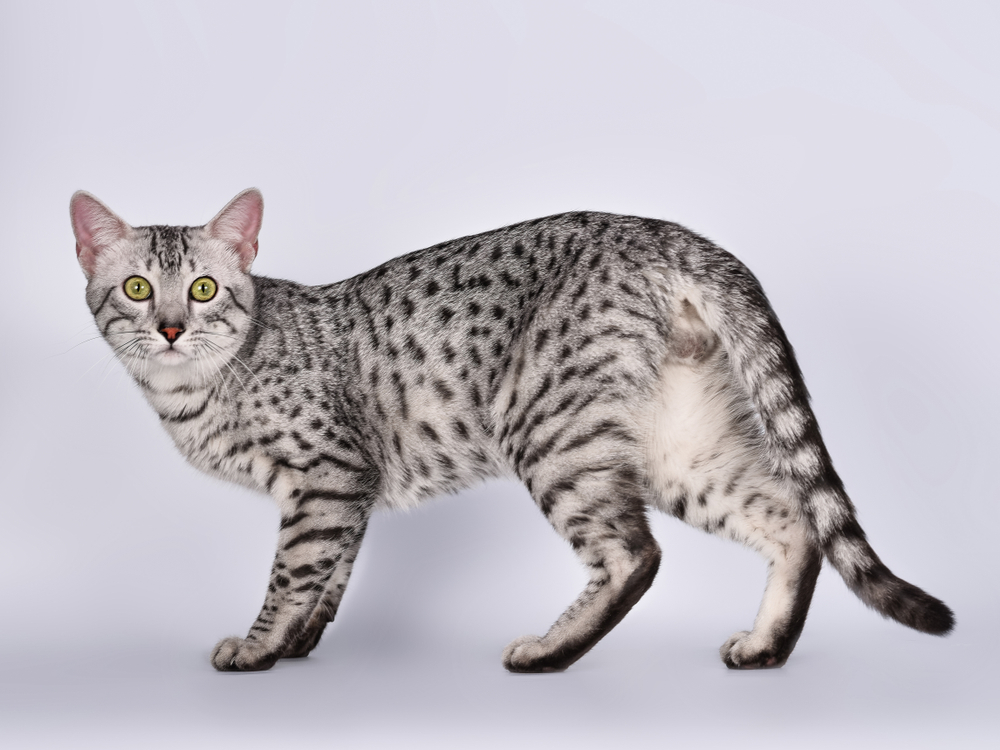
| Height: | 8–10 inches |
| Weight: | 7–9 pounds |
| Lifespan: | 13–15 years |
| Colors: | Silver, bronze, smoke, solid black, blue silver, blue spotted, blue smoke, solid blue |
| Suitable for: | Apartment living, families with older children, most lifestyles |
| Temperament: | Strong-minded, active, fearless, playful |
With a name like Egyptian Mau, it’s obvious where they come from. You could say that they’re the most Egyptian cat of all the modern cat breeds, and they have a history that likely dates back to at least 1500 B.C.E.
Spotted cats that look strikingly similar to Egyptian Maus have been found in ancient Egyptian texts and paintings that show the breed was worshipped several centuries ago.
- The Egyptian Mau was nearly wiped out in WWII.
- A Russian princess saved the breed with an Egyptian Mau that was a gift.
- They’re the only domestic cat that’s naturally spotted.
- Egyptian Maus are the fastest of all domestic house cats, clocked at speeds up to 30 mph.
2. Shirazi
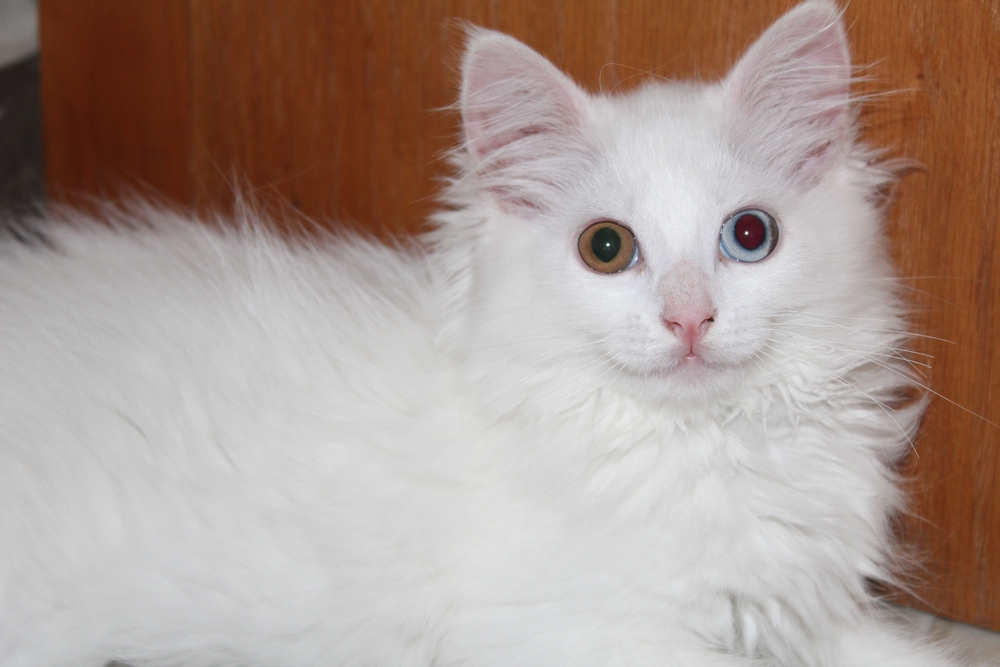
| Height: | 9–14 inches |
| Weight: | 7–13 pounds |
| Lifespan: | 12–17 years |
| Colors: | Bronze, blue, cream, black |
| Suitable for: | Families or singles in a quiet household |
| Temperament: | Playful, affectionate, gentle |
Head to Egypt, and you’ll see several Shirazi cats roaming the streets. If the myths and ancient legends are true, the Shirazi’s origin might date back many centuries to the time when Egypt was part of the Persian empire. This Egyptian cat breed breed isn’t registered, but they’re a common sight in their homeland.
- Shirazis are a cross between the Egyptian Mau and Persian.
- They have colors and markings similar to Egyptian Maus.
- They’re known for being calmer than Maus.
- They mix the best traits of both parent breeds.
3. Abyssinian
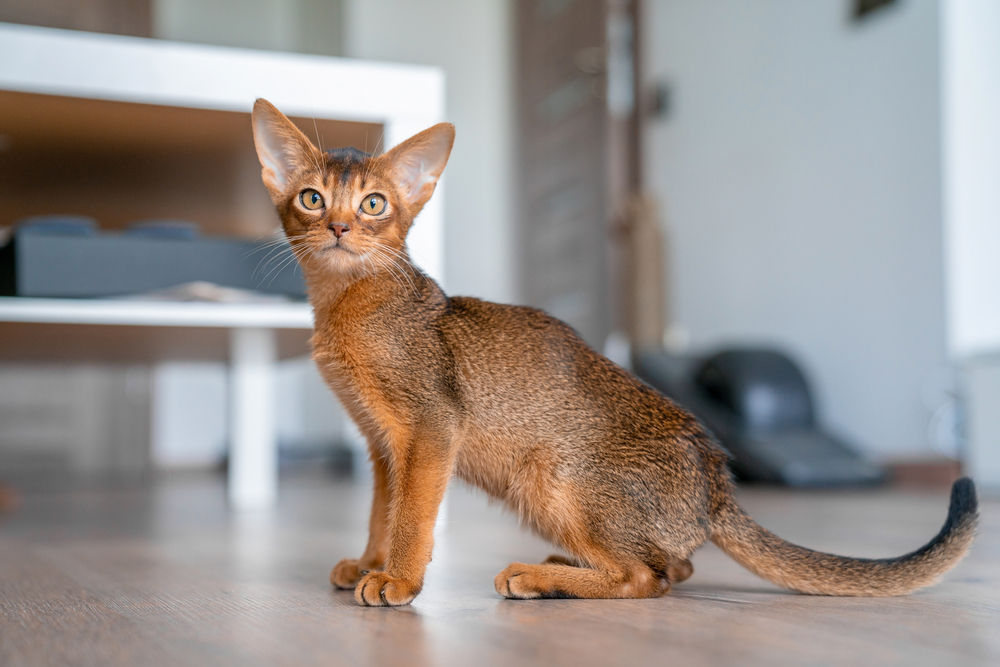
| Height: | 12 – 16 inches |
| Weight: | 6 – 13 pounds |
| Lifespan: | 9 – 15 years |
| Colors: | Red, cinnamon, blue, fawn |
| Suitable for: | Active families with older children, singles around the home |
| Temperament: | Curious, playful, intelligent |
It’s believed, though not proven, that Abyssinians are native to ancient Egypt, mainly due to their uncanny resemblance to the African wildcat that is their closest ancestor. Though the roots of this breed originated in the Nile Valley, they were developed in Great Britain when a cat was brought back from Abyssinia, modern-day Ethiopia, after a military expedition.
- WWII almost caused the Abyssinian’s extinction.
- Feline leukemia nearly wiped them out again after repopulation post-WWII.
- They have a ticked coat that gives them a cougar-like appearance.
- Despite being susceptible to several health problems, Abyssinians can live over 15 years.
4. Nile Valley Egyptian Cat
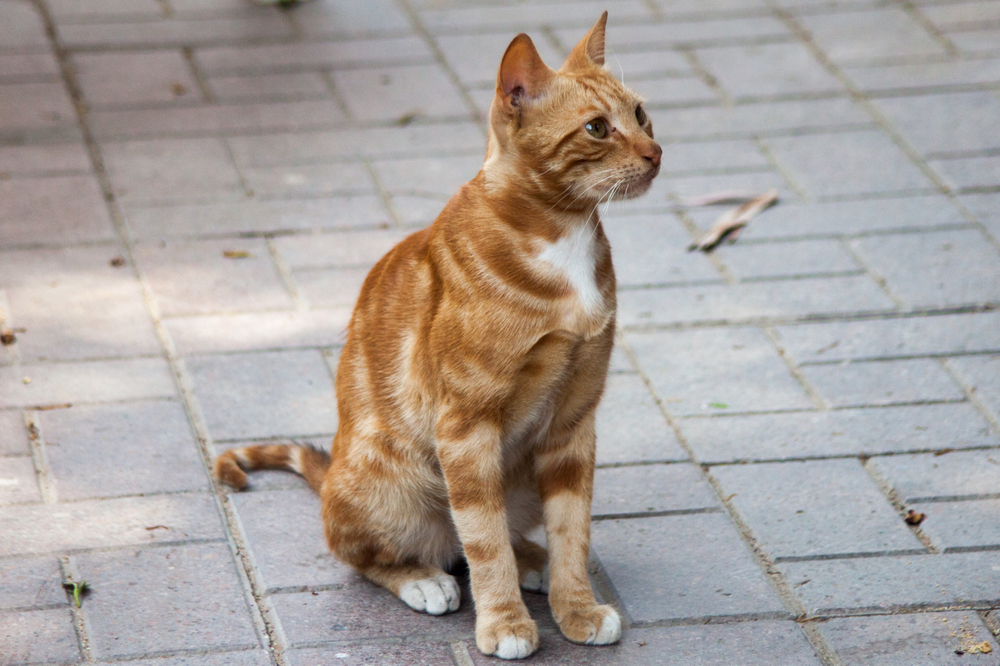
| Height: | 8–10 inches |
| Weight: | 7–9 pounds |
| Lifespan: | 13–15 years |
| Colors: | Silver, bronze, smoke, solid black |
| Suitable for: | Most lifestyles |
| Temperament: | Active, fearless, strong-minded |
There’s controversy surrounding the Nile Valley Egyptian Cat. Essentially, they’re a feral cat breed discovered in Egypt. Some consider them to be Egyptian Maus, but The International Cat Association has recognized them as an experimental breed.
The Egyptian authorities are attempting to eradicate the Nile Valley Egyptian Cat, but ongoing rescue efforts are attempting to prevent this from happening.
- There’s a rescue group dedicated to rehoming the cats in America.
- The Nile Valley Egyptian Cat can be identified by the mantle on their back and sides, which has a different pattern from the rest of their body.
- They come in various colors and patterns with long and short hair.
5. Chausie
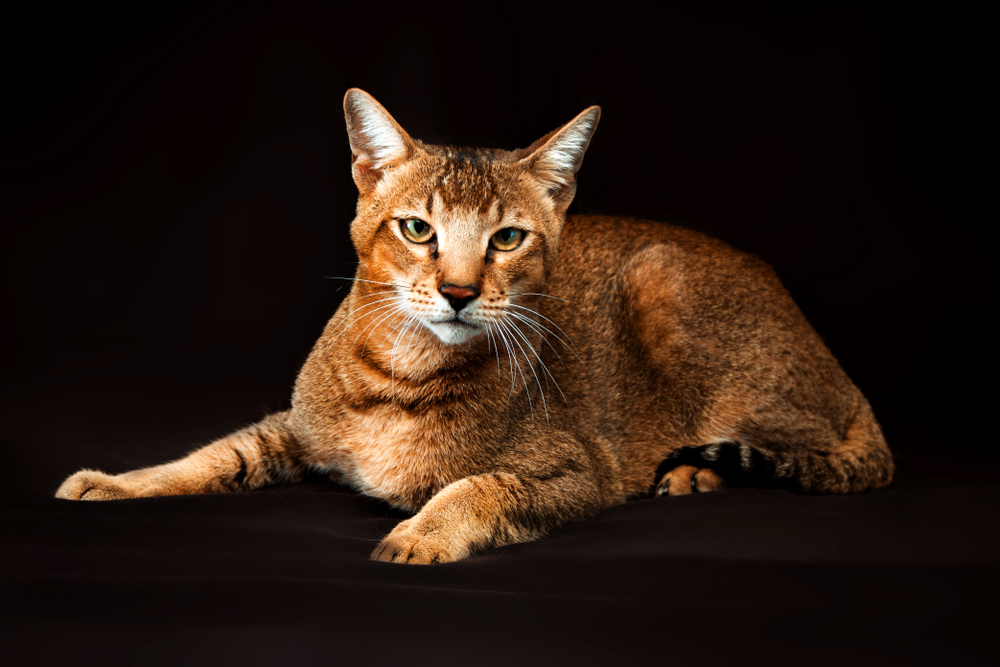
| Height: | 14–19 inches |
| Weight: | 15–30 pounds |
| Lifespan: | 12–14 years |
| Colors: | Orange, red, brown, cream |
| Suitable for: | Families with older children, singles, seniors, apartment-living |
| Temperament: | Social, attentive, active |
This Egyptian cat breed was created by crossing a jungle cat native to the Nile Delta with domesticated cats. In Latin, the jungle cat is called Felis chaus, which is where the Chausie derives their name from.
Felis chaus jungle cats have been found preserved in several ancient Egyptian temples, showing that the Egyptians prized them before they were even bred into the Chausie we know today.
- They’re one of the largest breeds of domestic cats, sometimes weighing as much as 25 pounds.
- Chausies are one of the few cats known to love water.
- In 2013, the International Cat Association finally bestowed Championship status upon the Chausie.
6. Savannah Cat
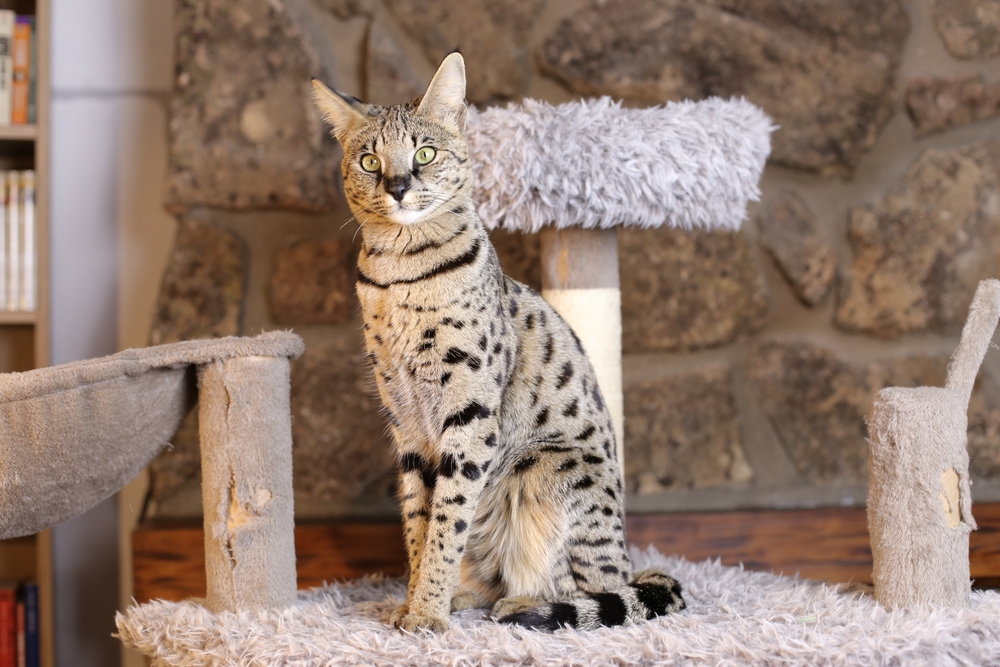
| Height: | 14–17 inches |
| Weight: | 12–25 pounds |
| Lifespan: | 17–20 years |
| Colors: | Brown, silver, black, smoke |
| Suitable for: | Active families, those wanting a large cat |
| Temperament: | Loyal, social, playful, friendly, suspicious, active, mischievous |
Savannah cats are some of the largest of all domestic cat breeds. They can weigh up to 25 pounds and look like their wildcat ancestors with their distinctly wild appearance. The Savannah was created by crossing a domestic cat with a Serval. There’s no proof that this breed comes directly from Egypt, but Servals have a prominent history in Egypt, so it is likely, or at least possible.
In ancient Egypt, Servals were exotic gifts, and they were traded as far back as the reign of Tutankhamun.
- Early generations are the largest, and subsequent generations are closer to the size of an average house cat.
- They have strong hunting instincts and are not ideal for houses with birds, fish, gerbils, and other small pets.
- Thanks to their wild origins, Savannah cats are one of only a handful of felines known to love water.

Conclusion
There may not be many breeds today that come from Egypt, but it’s possible that all domesticated cats today owe the ancient Egyptians for their cushy lives of luxury. If the Egyptian Mau was the only Egyptian cat breed you knew before this article, then hopefully now you’ve got a clearer picture of some of the fabulous felines that can trace their lineage back to this country that may well be responsible for today’s domesticated cats.
Related Reads:
- Egyptian Cat Names: Ideas for Enlightened & Divine Cats
- Small Exotic Cat Breeds That Are Allowed as Pets
Featured Image Credit: Mountains Hunter, Shutterstock



